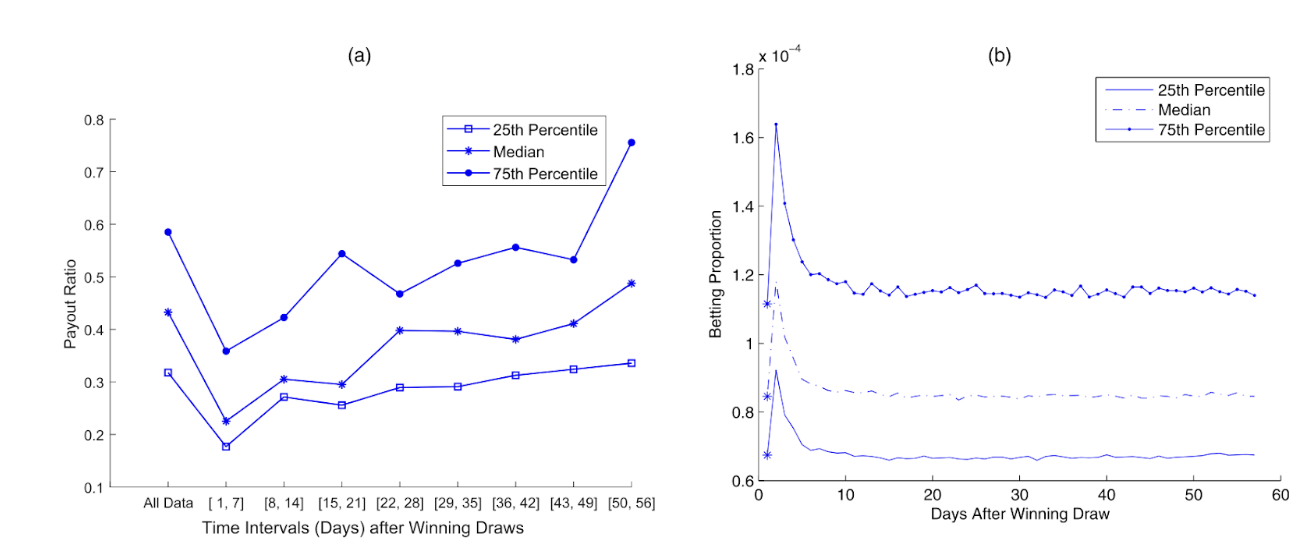Falling for the Hot Hand Fallacy and the Gambler’s Fallacy simultaneously? How?
Have you ever heard of the hot hand fallacy and the gambler’s fallacy? Chances are, you have. These two cognitive biases are pretty famous, thanks to a bunch of studies in psychology and economics that have shed light on them. They’re especially popular topics in the worlds of sports and gambling. Think about it: in basketball, there’s this belief that a player on a scoring streak has a ‘hot hand’ and will keep succeeding. On the flip side, when it comes to buying lottery tickets, the top advice is to avoid the latest winning number.
These fallacies seem like they’re on opposite ends of the spectrum. The hot hand fallacy is all about believing in the continuous occurrence of something random, while the gambler’s fallacy is about thinking there’s a lower chance of something happening again if it has already occurred. But here’s the twist: studies, including one by Croson and Sundali (2005), have found that these two fallacies can actually happen at the same time. One theory proposes that the length of the streaks is the key factor. This research shows that the gambler’s fallacy comes with shorter streaks, while the hot hand fallacy emerges when the streaks are longer. Another mainstream of evidence argues that the event generator determines the dominant fallacy. If the outcomes solely depend on a machine generator, gambler’s fallacy prevails; versus when the game requires skill and is human-based hothand fallacy would be observed. However, this theory is contradicted by recent studies that proved both fallacies exist in games handled by machine generators.
A study done by Qingxia Kong and colleagues provides a new perspective in understanding the phenomenon: the size of the winning set influences which fallacy dominates. They analyzed field data and conducted lab experiments, concluding that games with larger winning numbers lead to hot-hand fallacy. On the contrary, games with a single winning set are prone to the gambler’s fallacy. In short, the player’s behavior can be manipulated by the game design.
This hypothesis is supported by field evidence: Kong and his team analyzed the sale of winning numbers from two kinds of lottery games that differ in the winning set size. The first game is a 3-digit (3D) number game with only one set of winning numbers. Data shows that the sales of the winning numbers dropped by a significant 30% one day after they were drawn, demonstrating the gambler’s fallacy. Although the sales gradually rise back to their normal level over time, they remain 10% lower even after 10 days. In contrast, the sales for winning numbers of the 4-digit (4D) number game, which boasts 23 winning sets, significantly increased by 40% immediately after the draw. Different from the 3D game, the hot hand fallacy prevails in the 4D game.

Figure 1. (Color online) Betting on Previous Winning Numbers in 3D and 4D (Kong, Granic, Lambert, and Teo 2020)
To prove the influences of winning set size on the hot hand fallacy and the gambler’s fallacy, researchers organized lab experiments. Participants were divided into three groups, each playing a simulated number game with different winning set sizes. They guessed numbers in each round, earning points for matching the winning numbers. The groups labeled T=1, T=2, and T=3, varied only in the number of winning digits (one, two, and three, respectively).
The findings were striking. The probability of betting on the most recent drawn number decreases by 4.3% for T=1 players. The low betting rate even persisted into the following rounds, strongly indicating the gambler’s fallacy. However, this pattern wasn’t observed in group T=2 or T=3. Additionally, T=1 players transitioned from the gambler’s fallacy to the hot-hand fallacy as the streak length of the winning number hits 4. For T=2, this shift occurs at a shorter streak length, while T=3 players consistently showed the hothand fallacy, regardless of the streak lengths.
This study brought new understandings to the cooccurrence of the gambler’s and the hot hand fallacy. It suggests that the structuring of gambling games can directly manipulate people’s behavior. For instance, setting a large size of medium prizes for the lottery could nudge people towards the hothand fallacy. This illusion of control incentivizes players to keep playing. As lottery games are utilized by certain governments to improve social welfare, this study also provides guidelines for better designs that maintain players’ engagement while serving a greater social purpose.